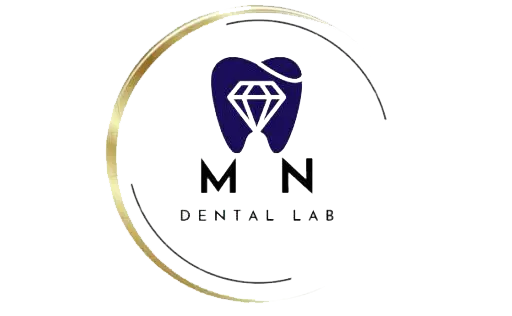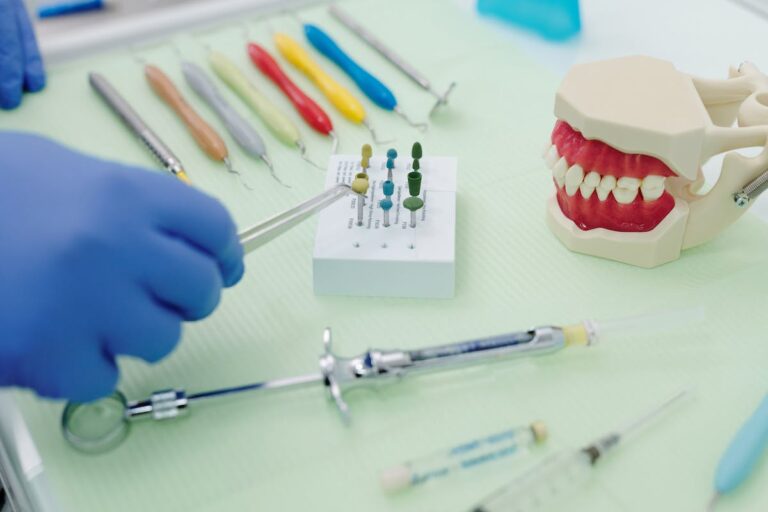Dental healthcare comprises various procedures, each vital for oral health. These range from routine cleanings to advanced treatments like root canal therapy or dental implants. However, many patients lack knowledge about these procedures. This text aims to clarify common dental procedures, offering a detailed overview for patient education. Knowing these procedures allows patients to manage their dental health confidently. Now, let’s discuss what these procedures involve.
Understanding Dental Check-ups
Dental check-ups are critical for oral health, involving thorough examinations of teeth, gums, and mouth to detect and prevent serious issues. They underscore oral hygiene’s role in overall health, enabling early identification of cavities, gum diseases, and oral cancer, which helps avoid complications and high treatment costs.
Regular brushing, flossing, a nutritious diet, and consistent dental check-ups are key oral hygiene practices. Oral health impacts systemic health, affecting cardiovascular and diabetes risks.
Understanding dental insurance basics is essential. Most plans cover two preventive visits annually to avert serious and costly treatments. Coverage varies, so understanding your plan’s specifics, including covered treatments, coverage extent, and out-of-pocket costs for different procedures, is crucial.
The Basics of Teeth Cleaning
Professional teeth cleaning, a preventative measure against oral diseases like cavities, gingivitis, and gum conditions, necessitates the elimination of dental plaque and tartar. Dental hygienists typically conduct this process for optimal teeth and gum health.
The importance of healthy gums, which serve as a protective shield for teeth, is paramount. Unhealthy gums may result in severe conditions such as periodontitis, causing jawbone damage and potential tooth loss. Regular professional cleanings can help maintain gum health by eradicating plaque and tartar accumulations that home brushing and flossing may miss.
Daily brushing and flossing, in conjunction with professional cleaning, are vital to oral health. Selecting fluoride-containing toothpaste is crucial to prevent tooth decay. Toothpaste catering to specific needs, such as sensitivity or whitening, also benefit oral health.
What Is Dental Filling?
A dental filling is a restorative procedure that repairs minor to moderate tooth damage usually caused by cavities or external trauma. The process includes removing decayed tooth material, cleaning the area, and filling the cavity with a specific material. This method treats cavities and prevents further decay by eliminating spaces for bacteria entry.
Different filling materials are used based on repair extent, filling location, and cost. Composite resins are durable and fracture-resistant for small to mid-size fillings. Dental amalgam, a metal mixture, is wear-resistant and cost-effective. Gold fillings, compatible with gum tissues, have a lifespan exceeding 20 years. Porcelain fillings resist staining and match tooth color. Glass ionomer is utilized for small fillings and root surface decay.
For preventing cavities, regular dental check-ups, a balanced diet, and proper oral hygiene are vital.
Root Canal Therapy Explained
Root canal therapy, often termed ‘root canal’, is a dental procedure aimed at bacteria and dead tissue removal from the tooth’s pulp chamber. Its purpose is tooth health restoration and further infection prevention. Misconceptions surround this therapy, including the belief of extreme pain, which is inaccurate due to modern dentistry advancements and pain management techniques. The procedure’s discomfort is typically equivalent to a filling. Local anesthesia numbs the tooth area, making the procedure virtually painless, with aftercare and over-the-counter medications managing post-procedure discomfort. Another misconception links root canal therapy to illness. However, the American Association of Endodontists confirms no scientific evidence supports this claim. Instead, untreated infected teeth can lead to serious health issues.
The Process of Dental Crowns
Dental crown procedure involves certain steps, offers benefits, and requires maintenance. It enables informed decision-making about dental health and eases patient apprehension. This process is key for optimal dental restoration.
Dental Crown Procedure Steps
The dental crown procedure involves the following steps:
- Consultation: Dentist assesses oral health, identifies crown necessity.
- Preparation: Tooth reshaped for crown fit, impression taken.
- Fabrication: Dental lab uses impression to craft crown.
- Temporary Placement: Temporary crown shields prepared tooth during crown creation.
- Permanent Placement: Dentist replaces temporary with permanent crown, secures with cement.
This process considers factors like crown material and lifespan.
Benefits and Care Tips
Dental crowns offer benefits, including restored tooth function and appearance, improved life quality, and gum disease prevention by shielding exposed tooth parts. In pediatric care, crowns prevent further decay of primary teeth. Proper care for crowns involves consistent oral hygiene practices, avoiding hard foods, and regular dental check-ups to maintain optimal crown condition.
In-depth Look at Dental Bridges
Dental bridges, vital in dental procedures, replace missing teeth, enhancing smile aesthetics and functionality. They help maintain face shape and distribute bite forces correctly.
Key considerations include: – Bridge Lifespan: Dental bridges typically last five to fifteen years, extendable with good oral hygiene and regular dental visits. – Bridge Materials: Bridges are constructed from materials such as porcelain, ceramics, or metal alloys, depending on patient preference, cost, and tooth location.
The process of acquiring a dental bridge involves several steps taken over multiple dentist visits: – Abutment teeth preparation. – Teeth impressions. – Bridge placement. – Bridge adjustment for optimal fit.
Dentures: A Comprehensive Guide
Dentures, vital in dental prosthetics, exist in diverse types for specific patient needs. Their longevity relies on sufficient care, impacting oral health. Knowledge on common denture issues and resolutions can prevent complications and offer relief.
Understanding Different Denture Types
In prosthetic dentistry, different denture types cater to varied patient requirements and preferences. Understanding these types aids in informed decision-making and impacts denture cost-effectiveness.
They include: – Complete Full Dentures: Substitute all teeth in either the upper or lower jaw. – Partial Dentures: Replace one or multiple missing teeth, providing a cost-effective solution. – Implant-Supported Dentures: Enhance stability via implants. – Snap-In Dentures: Merge the advantages of implants and removable dentures. – Overdentures: Accommodate over remaining teeth or dental implants.
Each type possesses unique benefits and considerations, thereby personalizing the selection.

Proper Denture Maintenance
Denture maintenance is vital to extend their use, assure function, and sustain oral health. Regular cleaning with specific brushes and cleansers is needed, while harsh, abrasive materials must be avoided to prevent surface damage.
Using denture adhesives can improve stability, comfort, and confidence. However, they are not substitutes for a good fit. Daily removal and cleaning of dentures is crucial to eliminate adhesive residue thoroughly.
Nighttime storage of dentures is critical for their longevity and hygiene. Soaking dentures in a cleaning solution or water prevents drying and shape alteration. Dentures with metal attachments may tarnish in soaking solutions, so dentist consultation is recommended for personalized advice.
Dealing With Denture Problems
Denture wearers often experience issues such as discomfort and poor fit. Common solutions include:
- Regular Adjustments: Dentist visits maintain denture fit.
- Proper Cleaning: Prevents infections, irritations.
- Denture Adhesives: Enhances denture hold, comfort.
- Gradual Acclimatization: Adapts mouth to new dentures.
- Healthy Oral Practices: Averts gum disease, oral infections.
Understanding these solutions ensures a comfortable, healthy denture experience.
The Procedure of Tooth Extractions
Tooth extraction, a prevalent dental procedure, necessitates the extraction of a tooth from its socket due to decay, disease, trauma, or orthodontic treatment. Dentists or oral surgeons, using local anesthesia, ensure patient comfort during the procedure.
Post-extraction care is vital. Adherence to the dentist’s guidelines, including dietary restrictions, smoking avoidance, and maintaining cleanliness at the extraction site, reduces complications. Pain management may include over-the-counter drugs or prescriptions.
For permanent tooth extraction, tooth replacement options exist. Depending on the number of missing teeth, options include dental bridges, partial dentures, or full dentures. The dentist determines the optimal choice based on the patient’s oral health and personal preferences.
Delving Into Dental Implants
Moving from tooth extractions, we delve into dental implants, advanced tooth replacement solutions. This section outlines the implant procedure, elucidating this intricate treatment. Additionally, it offers crucial guidance for implant aftercare, promoting dental implant longevity.
Implant Procedure Overview
In dental implant procedures, patient confidence increases with understanding. The procedure, which aims for implant longevity, begins with planning and material selection. Here is a succinct overview:
- Suitability for implants is assessed in the initial consultation and examination.
- Selection of implant material, typically titanium or zirconia, follows.
- Surgical insertion of the implant into the jawbone is the next step.
- A healing period allows for osseointegration, the fusion of the implant with the bone.
- Finally, the abutment and prosthetic tooth or teeth are placed.
The process, spanning several months, results in a robust, natural-looking replacement functioning like a normal tooth. With care, it can last a lifetime.
Post-Implant Care Tips
Post-operative care is vital for dental implant longevity and oral health. Key factors include robust oral hygiene, tobacco avoidance, and regular dental check-ups. Daily brushing and flossing combat bacteria that could lead to implant failure. Initially, post-implant diet should avoid hard and chewy foods to protect the implant. Gradual reintroduction of solid foods is recommended as healing advances. Consuming vitamins A, C, D, calcium, and phosphorus-rich foods promotes healing and extends implant lifespan. These measures facilitate successful recovery and long-term dental health.
The Reality of Teeth Whitening
Teeth whitening, a common cosmetic dentistry procedure, employs peroxide-based gels to remove tooth stains and discoloration. Yet, it can trigger whitening sensitivity, typically due to peroxide irritating the tooth nerve. This sensitivity manifests as a temporary reaction to hot and cold temperatures.
Home bleaching kits demand careful use, as overuse intensifies tooth sensitivity and can irritate gums.
Key factors to consider about teeth whitening include:
- Whitening effects are temporary and vary among individuals.
- Whitening procedure does not affect dental crowns or fillings.
- Process may induce temporary tooth sensitivity and gum irritation.
- Excessive use of whitening products can harm tooth enamel.
- Individuals with sensitive teeth or gum disease should avoid teeth whitening.
The Role of Orthodontics
Orthodontics, a dentistry branch, diagnoses, prevents, and treats dental and facial irregularities, mainly malocclusion. Orthodontic devices, including braces and braces alternatives such as clear aligners, lingual braces, and self-ligating braces, correct these issues. These alternatives offer advantages like comfort, aesthetics, and reduced treatment duration. Orthodontics enhances physical appearance, promotes oral health, and improves oral hygiene by straightening teeth, making them easier to clean, thereby reducing gum disease and tooth decay risks. It also rectifies speech, chewing and jaw alignment problems. Constant orthodontic advancements provide patients with effective, comfortable treatment options, marking significant progress in dental health.
Frequently Asked Questions
What Is the Typical Recovery Time After a Dental Procedure?
The recovery time post dental procedure is procedure complexity-dependent. Affordability of aftercare, influenced by procedure costs and insurance coverage, can also impact recovery.
How Can I Manage Pain or Discomfort After a Dental Procedure?
Post-dental procedure discomfort is manageable via pain management techniques, including over-the-counter medications. Consuming soft foods and ample liquids can expedite recovery and alleviate discomfort.
What Are the Potential Risks or Complications Associated With These Dental Procedures?
Dental procedures may entail potential complications such as infection, nerve damage, and extended bleeding. The handling of these complications can be influenced by factors like insurance coverage and procedure costs, underlining the importance of comprehensive pre-treatment discussions.
How Can I Maintain My Oral Health After a Dental Procedure?
To maintain oral health post-dental procedure, dietary modifications, specifically reduced consumption of sugary and acidic items, are key. Regular usage of oral hygiene products – those recommended by your dentist for cleaning and rinsing – optimizes recovery.
Can These Dental Procedures Have Any Impact on My Overall Health?
Indeed, dental procedures impact overall health. The procedure’s cost and insurance coverage influence dental care quality and frequency, subsequently affecting overall well-being.






